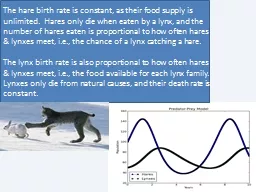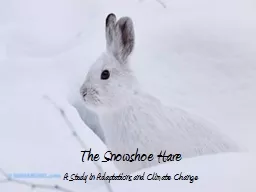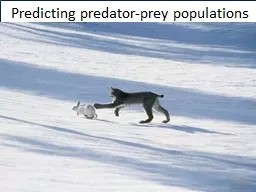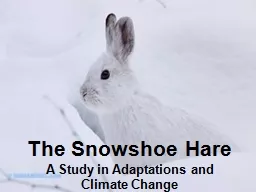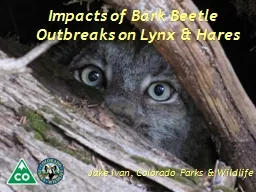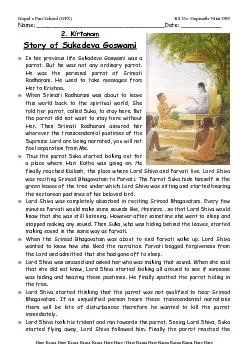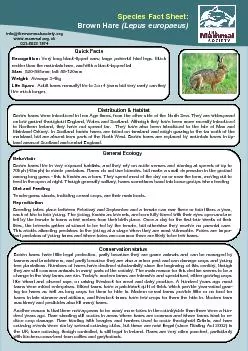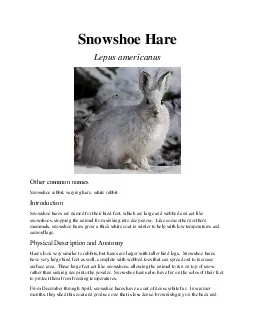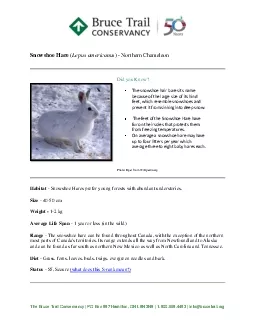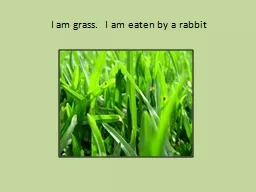PPT-The hare birth rate is constant, as their food supply is unlimited. Hares only die when
Author : luanne-stotts | Published Date : 2018-11-03
meet ie the chance of a lynx catching a hare The lynx birth rate is also proportional to how often hares amp lynxes meet ie the food available for each lynx family
Presentation Embed Code
Download Presentation
Download Presentation The PPT/PDF document "The hare birth rate is constant, as thei..." is the property of its rightful owner. Permission is granted to download and print the materials on this website for personal, non-commercial use only, and to display it on your personal computer provided you do not modify the materials and that you retain all copyright notices contained in the materials. By downloading content from our website, you accept the terms of this agreement.
The hare birth rate is constant, as their food supply is unlimited. Hares only die when: Transcript
Download Rules Of Document
"The hare birth rate is constant, as their food supply is unlimited. Hares only die when"The content belongs to its owner. You may download and print it for personal use, without modification, and keep all copyright notices. By downloading, you agree to these terms.
Related Documents

